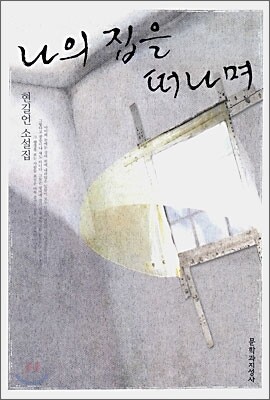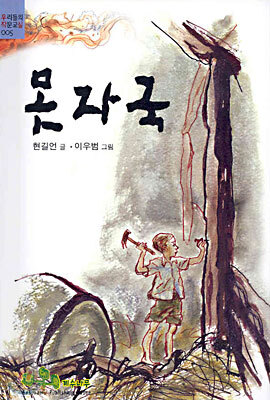Hyun Kil-un (1940 – 2020) was a South Korean writer.
Life
Hyun Kil-un was born on February 17, 1940, on Jeju-do. Hyun studied Korean literature at Jeju University and Sungkyunkwan University, earning his Ph.D at Hanyang University. He made his literary debut in 1980 when his stories "Seong muneojineun sori" (성 무너지는 소리 The Sound of the Castle Falling) and "Geupjang seongeo" (급장 선거 Class Election) were recommended to Hyundae Munhak magazine. His major works include Urideurui jobunim (우리들의 조부님 Our Grandather), his Yeoljeon (열전 Biographies) series, and Sajewa jemul (사제와 제물 The Priest and the Offering). Hyun was a professor of Korean language and literature at Hanyang University.
Writing
Hyun's work cannot be separated from his birthplace, Jeju-do, the largest island of Korea. Hyun's Jeju-do was not a vacation destination, but the land of the first mass rebellion after the Korean national division. Hyun visited and re-visited the events of the time, and the scars that they caused.
The stories contained in his first collection, Yongmaui kkum (용마의 꿈 The Dream of Yongma), deal specifically with the traumatic historical event remembered as the April 3rd Uprising, in which masses of ordinary civilians were slaughtered by the police in an attempt to rout communists. Hyun tries to reinvestigate this event and properly mourn the death of innocent victims. Often it is the unique customs and folklore of Jeju that suggests a way toward healing: "Gwangjeongdanggi" (광정당기 The Journal of Gwangjeong Pavilion) and "Geumeumbamui jeui" (그믐밤의 제의 Ceremony on the Last Day of the Month) utilize the traditional legend of a “strong woman” to describe the hope people of Jeju harbor for the return of a hero who will save them from the tyranny of politicians and bureaucrats.
Hyun was also concerned with ideological or historical distortions of truth. Private truth is to be privileged over official accounts; "Kkeopjilgwa soksal" (껍질과 속살 The Skin and the Inner Flesh) employs the sustained metaphor of surface and depth to characterize the relationship between official, often ideologically manipulated versions of “truth” and enduring human truths buried beneath. It is precisely these surface distortions or historical fallacies that he sought to expose in "Sinyeol" (신열 Fever) and "Isanghan kkeun" (이상한 끈 A Strange Tie).
Su obra no se puede separar de su lugar de nacimiento, Jeju, la isla más grande de Corea. La Jeju de Hyun Kil-Un no es un destino de vacaciones, sino la tierra de la primera gran rebelión tras las división de Corea. Él rememora una y otra vez los sucesos de esa época y las cicatrices que dejaron.3 Las historias que contiene su primera recopilación El sueño de Pegaso (Yongma ui kkum, 1984) tratan específicamente de los traumáticos sucesos del Levantamiento del 3 de abril, en el que masas de ciudadanos comunes fueron masacrados por la policía con el fin de derrotar a los comunistas. Hyun Kil-Un investiga de nuevo este episodio y hace un duelo por la muerte de tanta gente inocente con el fin de consolar sus espíritus. A menudo son las costumbres y el folclore único de la isla de Jeju los que sugieren un forma de cura: "El diario del pabellón Gwangjeong" (Gwangjeong dang gi) y "La ceremonia del último día del mes" utilizan la leyenda tradicional de la "mujer fuerte" para describir la esperanza que mantiene la gente del puerto de Jeju de que aparezca un héroe que los salve de la tiranía de los políticos y los burócratas. También se ha preocupado por las distorsiones ideológicas o históricas de la verdad. Sostiene que la verdad privada ha de tener el privilegio por encima de los registros oficiales. En "La piel y la carne" (Kkeop-jil gwa soksal, 1993), emplea la metáfora de la superficie y la profundidad para caracterizar la relación entre la versión oficial de la verdad, a veces manipulada ideológicamente, y las verdades imperecederas y humanas que están enterradas debajo. Son también estas distorsiones superficiales o falacias históricas las que busca mostrar en "La fiebre" (Sinyeol) y "Una extraña cuerda" (Isanghan kkeun).
Son œuvre ne peut pas être séparée de son île natale, Jeju-do, la plus grande île de Corée. L'île de Jeju telle que la connaissait Hyeon dans son enfance n'était pas cette destination de vacances prisée de nos jours, mais la terre de la rébellion notamment après la division nationale coréenne. Il visite et revisite les événements de l'époque, et les souffrances qu'ils ont laissées aux habitants de l'île3. Les histoires contenues dans son premier recueil, Le rêve de Pégase (Yongma-ui kkum, 1984), traitent spécifiquement des événements traumatiques dans les mémoires notamment concernant le soulèvement du 3 avril à Jeju, dans lequel beaucoup de civils ont été abattus par la police dans une tentative de répression du communisme. Hyeon tente de rouvrir l'enquête concernant cet événement tout en essayant d'apporter un peu réconfort aux personnes ayant perdu leurs proches. Dans ses récits, ce sont souvent les coutumes et le folklore de l'île de Jeju qui suggère le chemin vers la guérison. Le Journal du pavillon Gwangjeong (Gwangjeong-dang gi) et Cérémonie de la dernière nuit du mois (Geumeumbamui je-ui) mettent en scène les légendes traditionnelles de l'île pour décrire le caractère positif des gens de Jeju. Hyeon a également traité des distorsions idéologiques et historiques concernant l'île de Jeju. La peau et la chair (Kkeop-jil-gwa soksal, 1993) emploie la métaphore de la surface et de la profondeur pour caractériser la relation entre les versions officielles et souvent manipulées de la «vérité» avec le sort des gens ordinaires dont l'histoire se trouve bafouée. Ce sont précisément ces distorsions en surface ou ces erreurs historiques qu'il cherche à exposer dans Forte fièvre (Sinyeol) et Une corde étrange (Isanghan kkeun)4. En 1990, il remporte le Prix de littérature contemporaine (Hyundae Munhak).
현길언(1940~2020)은 대한민국의 소설가다.
생애
현길언은 1940년 제주 서귀포에서 태어났다. 제주사범학교를 거쳐 제주대학교 국어국문학과, 성균관대학교 대학원, 한양대학교 대학원을 졸업하였다. 한양대학교 국어국문학과 교수로 재직하였다. 작가는 사범학교 재학 중 제주도 내 고등학생들과 함께 《석좌》 문학 동인으로 활동했으며, 1979~1980년에 《현대문학》에 〈성 무너지는 소리〉와 〈급장선거〉가 추천되며 작품 활동을 시작했다.
현길언은 제주특별자치도의 역사와 주민들의 삶에 관심을 갖고 지속적으로 탐구했다. 금기시됐던 제주 4·3항쟁을 문학 작품으로 알린 대표적인 작가 중 한명으로, 제주 현대사에 천착하여 소설 외에도 여러 연구서를 펴내기도 했다. 또한 작가는 해방 이후 이어진 이념의 대립과 갈등으로 인한 상처를 휴머니즘으로 치유하려는 시도를 했다. 2020년 세상을 떠났다.
작품 세계
현길언은 해방 이후의 이념 갈등 문제, 6·25 전쟁과 분단문제, 제주 4·3 항쟁, 그리고 억압받은 민중의 삶 등을 작품의 주제로 삼아, 이데올로기의 폭력성을 고발하고 이념과 권력에 희생된 사람들의 삶을 소설로 형상화했다 특히 《귀향》(1982), 《우리들의 조부님》(1982), 《먼 훗날》(1984) 등의 작품을 통해 제주도민에게 상처로 남아 있는 1948년 4·3 사건을 소설화함으로써 억울하게 죽은 이들의 넋을 위로하고 4·3 사건의 역사적인 의미를 재 규명할 것을 제기하였다.
현길언은 소설에서 역사 혹은 이데올로기라는 명분 앞에서 간과되는 개인의 삶을 강조했다. 이데올로기나 역사를 '껍질'에, 인간의 진실을 '속살'에 비유하는 《껍질과 속살》(1986)을 비롯해 역사 속에 묻힌 개인의 왜곡된 진실을 파헤치고 현재까지 계속되는 허위와 폭력을 소설화한 《신열》(1984), 《이상한 끈》 등의 작품이 이러한 경향을 보여준다.
소설집 《나의 집을 떠나며》(2009)는 작가가 꾸준히 관심을 가지고 소설적 주제로 삼아왔던 인간관계에 관한 작품들을 묶은 소설집이다. 그중에서도 '가족의 내적 의미'에 대한 성찰과 허위를 고발한 4편의 단편과 1편의 중편 소설을 수록했다. 작가는 소설집에서 죽음과 행복 등 인간을 둘러싼 근본적인 문제에 대한 미시적인 접근을 시도했다.
소설집 《유리 벽》(2011)은 작가는 죽음을 둘러싼 고독과 공포를 극복하려는 인물들의 이야기를 통해 저마다의 몫으로 주어진 인간의 존재에 대해 고민하고 있다.
소설집 《언어 왜곡설》(2019)에서 작가는 ‘인간관계’와 ‘언어’에 통찰을 바탕으로 내밀한 관계에서 관찰되는 애증을 보여준다.
주요 작품
1) 소설집
《닳아지는 세월》, 문학과지성사, 1987.
《그림자와 칼》, 현대문학, 1987.
《나의 집을 떠나며》, 문학과지성사, 2009.
《유리 벽》, 문학과지성사, 2011.
《누구나 그 섬에 갈 수 없을까》, 물레, 2014.
《불과 재》, 물레, 2018.
《뿔 달린 아이들》, 물레, 2018.
《언어 왜곡설》, 문학과지성사, 2019.
2) 장편소설
《한라산》, 문학과지성사, 1995(미완)
《벌거벗은 순례자》, 지식산업사, 1999.
《열정시대》, 랜덤하우스코리아, 2008.
《꿈은 누가 꾸는가-섬의 여인 김만덕》, 물레, 2012.
《숲의 왕국》, 물레, 2012.
《비정한 도시》, 홍성사, 2015.
《묻어버린 그 전쟁》, 본질과현상사, 2019.
3) 산문집
《현진건 산문집》, 한양대출판부, 2003.
《광야를 건너는 나그네》, 솔과학, 2005.
4) 기타
《현진건소설 연구》, 이우출판사, 1988.
《한국소설의 분석적 이해》, 문학과비평사, 1990.
《한국 현대소설론》, 태학사, 2002.
《소설에서 만나는 한국인의 얼굴》, 태학사, 2003.
《섬의 반란, 1948년 4월 3일-제주4.3사건의 진실》, 백년동안, 2014.
《제주 설화와 주변부 사람들의 생존양식》, 태학사, 2014.
수상 내역
1985년 제5회 녹원문학상
1990년 제35회 현대문학상
1992년 대한민국 문학상
2011년 이수문학상





